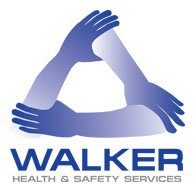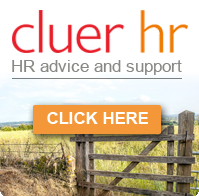This assessment is required under the Management of Health and Safety at Work Regulations 1999.
This document identifies general hazards in the working environment, such as slips, trips and fall hazards, hygiene considerations, heating, cleaning, lighting and general environmental features including the provision for first aid and recommends control measures aimed at reducing the likelihood of harm occurring from these hazards.
This assessment is required under the Regulatory Reform (Fire) Safety Order 2005.
This document identifies fire hazards in the working environment, in areas such as fire routes, fire exits and all other areas. It checks for the presence of necessary arrangements, facilities and detection such as smoke and heat detection, fire extinguishers, fire marshals and emergency lighting and recommends control measures aimed at reducing the likelihood of harm occurring from these hazards.
This assessment is required in accordance with Health and Safety Display Screen Equipment Regulations 1992.
These documents refer to each individual habitual computer user, and summarises both positive and negative points identified at the user’s workstation setup, including desk, chair, keyboard, mouse and screen, electrical and welfare considerations at the workstation. Recommendations may be made for any provisions which will improve the user’s setup, and posture training will be provided where required during the assessment.
This assessment is required in accordance with The Manual Handling Operations Regulations 1992.
This document identifies the hazardous manual handling tasks which are carried out, and makes recommendations designed to reduce the likelihood that manual handlers will suffer injury. Recommendations may include the provision of manual handling training, or the provision of suitable manual handling aids for specific tasks.
This assessment is required under the Management of Health and Safety at Work Regulations 1999.
This assessment looks in detail at the daily work routine of a new or expectant mother at work. It identifies any potential areas which may cause harm or discomfort and makes recommendations for any reasonable adjustments required.
This act is required under the Health and Safety at Work Act 1974.
The Equality Act 2010. The Equality Act became law in October 2010. It replaced previous legislation (such as the Race Relations Act 1976 and the Disability Discrimination Act 1995) and ensures consistency in what employers and employees need to do to make their workplaces a fair environment and comply with the law.
This assessment is required under the Management of Health and Safety at Work Regulations 1999.
This document refers to individuals or departments and seeks to make recommendations to reduce work-related stressors to an acceptable level. This risk assessment is specifically required when your organisation has been informed that someone is either experiencing a stress-related illness or work-related stress beyond an acceptable level.
This assessment is required in accordance with Health and Safety Display Screen Equipment Regulations 1992.
This document refers to any individual who formally or habitually spends a significant time working from home. It takes into account the working environment including the workstation setup and also checks that electrical appliances which are being used for work purposes are in a safe condition.
This assessment is required in accordance with Control of Substances Hazardous to Health Regulations 2002.
This document relates to any chemical or flammable liquids or substances which are hazardous to health. Amongst other things, it will recommend that COSHH items are suitably and securely stored, and that data sheets are available giving specific information about each substance used.
This assessment is required in accordance with The Management of Health and Safety at Work Regulations 1999.
This document refers to any persons in the working environment below the age of 18 and considers specific hazards which may have a high risk due to the inexperience and potential immaturity of the individual. This assessment is highly specific to the individual, their working environment and the nature of work which is being undertaken.
This assessment is required in accordance with The Management of Health and Safety at Work Regulations 1999.
This document relates to any individual whose place and hours of work result in them being on their own for prolonged periods of time. The assessment will make recommendations considering fire safety and first aid along with relevant medical conditions and will often recommend that remote monitoring is affected for the lone worker.
This assessment is required in accordance with The Work at Height Regulations 2005 and The Management of Health and Safety at Work Regulations 1999.
This document relates to any tasks carried out within the working environment where working at height is involved. This may include tasks such as changing light bulbs, general maintenance and cleaning of ceilings or windows. The assessment is likely to recommend that suitable and sufficient ladders are provided, as well as individuals receiving work at height / ladder safety training where appropriate.
Regardless of the industry you work in, all workers within the UK are subject to the same Working Time Regulations. The Working Time Regulations 1998 outline the number of hours that can be worked, and the required rest breaks during these hours.
Under the Working Time Regulations 1998, no worker can work for more than 48 hours, unless they themselves choose to do so by “opting out”.
For any shift lasting over 6 hours, workers are required to have a 20-minute rest. The legislation also stipulates that in any 24 hours, there must be at least 11 consecutive hours of rest.
For more information about Working Time Regulation 1998, please get in touch.
If you require any more information on our Health and Safety at work regulation services, Contact us today!

Contact
Walker Health and Safety Services Limited,
Suite 6, C1, Coalport House,
Stafford Court,
Stafford Park 1,
Telford,
Shropshire,
TF3 3BD
Telephone: 0845 834 0400
Fax: 0845 834 0401
Email: info@walkersafety.co.uk


